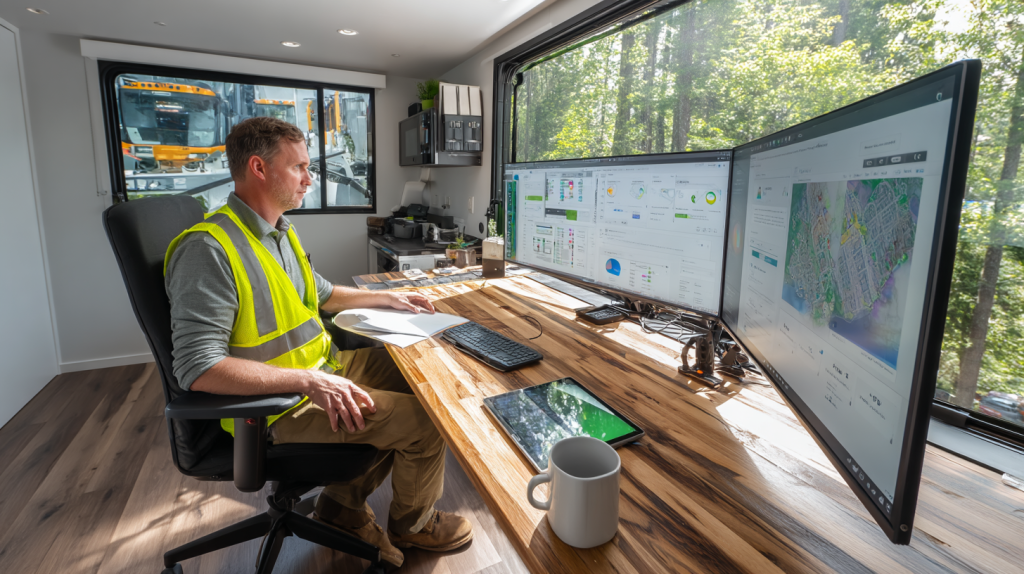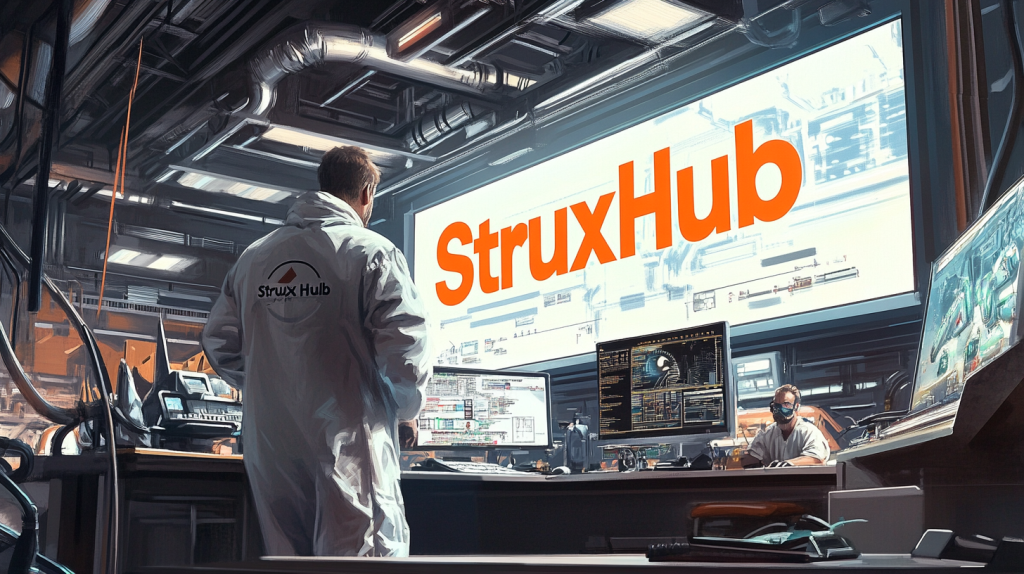Best Construction Procurement Management Software for General Contractors and Superintendents
Table of Contents:

Procurement delays and material mix-ups are some of the most expensive problems in construction. For general contractors and superintendents managing multiple crews, vendors, and delivery schedules, even a small hiccup can cause cascading delays, missed milestones, and budget overruns. That’s why choosing the right construction procurement management software is no longer optional—it’s essential.
Modern procurement platforms are designed to streamline everything from bid collection to purchase order approvals, vendor tracking, and material delivery confirmations. They take the chaos out of spreadsheets, emails, and paper-based systems, allowing your team to operate from a single source of truth. And when delays do happen, the right software ensures you know immediately—and can act quickly.
In this blog, we’ll walk through the most important features, benefits, and best practices for selecting procurement software that fits your team’s size, project scope, and field operations. Whether you’re overseeing commercial builds or fast-moving residential jobs, the goal is the same: to keep bids competitive, materials flowing, and your project on schedule.
What Should You Look for in Construction Procurement Software?
Not all procurement platforms are built for construction. Some are generic purchasing tools adapted from other industries—and they often fall short when applied to the fast, field-driven pace of construction. For GCs and supers, the right software must reflect how procurement really works on-site: multiple quotes per item, real-time adjustments, and clear communication between office and field.
The ideal system allows your team to issue bid requests, evaluate vendors, generate POs, and track materials without juggling email threads or chasing paperwork. It should also integrate seamlessly with your job costing, scheduling, and project management tools to reduce duplicate data entry and manual updates. Bonus points if your field team can access material statuses from a phone or tablet—because waiting for updates at the trailer just doesn’t cut it anymore.
Top Benefits
- Faster and more competitive bidding
Procurement software lets you send bid packages to multiple vendors in one click, compare quotes side by side, and lock in better pricing—faster. - Real-time material tracking and delivery alerts
Keep your supers and PMs updated on what’s arriving and when, reducing downtime and coordination headaches on site. - Better documentation and audit trails
Every quote, PO, approval, and delivery is automatically logged, so you’re protected during disputes and project closeout.
Best Practices
- Use construction-specific platforms, not generic ERPs
Choose tools that understand bid leveling, spec compliance, subcontractor workflows, and long-lead items. - Set clear user permissions across your team
Define who can request, approve, and receive materials to reduce miscommunication and ensure accountability. - Integrate procurement with your project schedule
Link material deliveries to construction phases, so you never start work without the right products on site.
When your procurement system mirrors the reality of field execution, your entire project runs smoother—from buyout to final inspection.
Why Procurement Speed Matters in Construction Projects
Time is money on the jobsite, and nowhere is that truer than in procurement. Every day lost to delayed bids, slow PO approvals, or late deliveries can throw off your schedule and drain your budget. That’s why the speed and efficiency of your procurement workflow is a key competitive advantage for both GCs and superintendents.
The right procurement management software compresses the timeline from quote request to jobsite delivery. Instead of waiting days for emails to come back, your team can issue digital bid packages instantly, track responses in one place, and approve vendors without bottlenecks. Real-time updates also allow field teams to adapt quickly—reassigning crews or adjusting sequencing based on what’s available.
Even better, fast procurement means you can lock in pricing earlier and avoid market volatility or surprise material shortages. In a world where lead times and costs can change overnight, moving fast doesn’t just protect your schedule—it protects your margins too.
Top Benefits
- Shorter procurement cycles mean faster project starts
With automation and digital approvals, your team can go from bid to buy in hours—not days. - Fewer schedule delays from late materials
Real-time visibility ensures the field knows exactly what’s coming and when, so they can plan accordingly. - Better agility when responding to scope changes
Need to swap a material or add more units? Fast procurement tools let you adjust instantly without disrupting progress.
Best Practices
- Automate your most common procurement workflows
Create templates for frequently purchased items or trades to speed up bid requests and approvals. - Enable mobile access for field updates
Let your supers confirm deliveries, log issues, or request new materials from their phones in real time. - Track procurement KPIs like lead times and vendor response rates
Use data to improve future performance and hold vendors accountable.
Procurement speed doesn’t just keep your job moving—it builds trust with subs, impresses clients, and protects your bottom line.
How Does Procurement Software Improve Materials Tracking on Site?
One of the most frustrating scenarios for any superintendent: a crew is ready, the task is scheduled, but the materials haven’t shown up—or worse, the wrong items arrive. Poor visibility into material tracking can cause work stoppages, rework, and blame games that eat up time and budget. That’s where procurement software changes the game.
With construction-specific procurement tools, your team can track materials from the moment they’re ordered to the moment they’re installed. This includes order confirmations, shipment tracking, and jobsite delivery verification—all in one place. Field teams can check what’s in transit, flag damaged items, and upload photos to document delivery conditions—right from the jobsite.
Even more powerful is the ability to link materials to specific tasks, trades, or schedule phases. This makes it easy to coordinate delivery timing, storage logistics, and crew readiness—so your teams aren’t standing around waiting or trying to find missing items.
Top Benefits
- End-to-end material visibility
Know exactly what was ordered, when it ships, and when it’s expected—no more guessing or chasing emails. - Field-level tracking and documentation
Supers and foremen can log receipts, note discrepancies, and confirm specs using their phones or tablets. - Fewer delays and less rework due to material issues
By verifying deliveries as they happen, teams can fix problems before they impact the schedule.
Best Practices
- Tag materials by trade or work area
Help crews know where deliveries belong and what tasks they support—streamlining workflow on site. - Use delivery photos and timestamps
Create a record of received items to validate invoices, support warranty claims, or resolve disputes. - Sync material status with your daily huddles
Make material tracking a regular part of your standups so everyone stays informed and ready.
When you manage materials proactively, your field teams stay productive—and your schedule stays intact.

StruxHub
Experience the power of StruxHub today and witness firsthand how it can revolutionize your construction operations.
FAQ
What features should construction companies prioritize when selecting procurement software?
When choosing procurement software, construction companies should prioritize features that align with the realities of field execution, fast-paced bidding, and complex material coordination. First and foremost, the platform must support digital bid requests and side-by-side quote comparison. This allows project managers and estimators to issue bid packages to multiple vendors, collect responses quickly, and level them based on spec compliance, unit pricing, and lead times.
Beyond the bidding phase, robust purchase order (PO) creation and tracking tools are essential. The software should generate POs directly from accepted bids, allow for digital approvals, and assign materials to specific cost codes or schedule phases. Field teams should also have access to real-time PO and delivery status, ideally via a mobile-friendly interface. This ensures that superintendents and foremen can track materials from procurement to jobsite without chasing down emails or paperwork.
Integration capabilities are also critical. Your procurement software should work seamlessly with your project management, job costing, and accounting tools—reducing double entry and keeping all departments aligned. Features like API access, export tools, and compatibility with systems like Procore, QuickBooks, or Sage can dramatically improve overall workflow efficiency.
Finally, construction teams should look for strong documentation and audit trail features. Every step—bid requests, approvals, vendor communication, delivery confirmations—should be time-stamped and searchable. This ensures that teams are protected during audits, disputes, or change order validations.
In short, prioritize tools that centralize procurement data, support both field and office access, and integrate with your broader construction tech stack. These features ensure faster bids, better material tracking, and smoother execution on site.
How does procurement software help with materials tracking and delivery visibility?
Procurement software plays a crucial role in materials tracking by providing end-to-end visibility from the time a material is ordered to the moment it arrives on site. In construction, where schedule delays often stem from material shortages or delivery errors, this visibility helps teams stay on track and reduces rework and miscommunication.
With a strong procurement platform, project managers can assign delivery timelines to each PO and receive automatic updates when vendors confirm shipping. The software can log shipment tracking numbers, estimated arrival times, and even store delivery documentation such as bills of lading or photos. This information is easily accessible by field teams—especially if the tool is mobile-enabled—so superintendents can prepare for deliveries, allocate storage space, and confirm receipt without needing to call the office.
Once materials arrive, field teams can mark them as received, flag any issues, upload images of damaged items, and note discrepancies—all directly within the platform. This creates a real-time feedback loop between the jobsite and procurement personnel, helping the office act quickly if something goes wrong. For example, if the wrong type of piping shows up or a delivery is short by ten units, the issue can be logged and shared instantly, speeding up replacement or resolution.
This level of tracking also improves jobsite planning. Materials can be tagged by trade, task, or phase, helping foremen understand which deliveries are needed for upcoming work. When used effectively, procurement software becomes more than a purchasing tool—it’s a communication layer between procurement, field execution, and schedule management.
Ultimately, the right software minimizes the unknowns around materials and ensures your crews are working with exactly what they need, when they need it.
Can procurement software really improve communication between the field and office?
Yes—and it’s one of the most impactful benefits of using construction-specific procurement software. Traditional procurement communication often relies on fragmented emails, printed delivery logs, and verbal updates. These outdated methods create gaps that lead to lost information, duplicate orders, and delayed issue resolution. Procurement software creates a centralized, real-time platform that field and office teams can access together—improving clarity, accountability, and speed.
For superintendents and field crews, procurement software offers a window into everything that’s been ordered: what’s been approved, what’s in transit, and when it’s scheduled to arrive. Instead of wondering whether a delivery is coming today or next week, field teams can check status updates from their phone or tablet. This reduces unnecessary calls, emails, and site walkarounds.
For office teams, the platform provides faster, clearer updates from the field. If a delivery arrives damaged, the superintendent can upload a photo and note the issue within the system. Procurement staff or PMs can act immediately—contacting the vendor, issuing a replacement request, or adjusting the schedule accordingly.
This communication loop is particularly valuable when dealing with change orders. If a material spec changes, the field team can flag the update in the software, attach a drawing revision, and alert the procurement team—avoiding costly mistakes or rework.
Additionally, procurement software often includes role-based permissions, allowing field users to view but not edit sensitive budget data, while still keeping them informed. This reduces friction and builds trust between teams.
In short, procurement software turns the procurement process from a disconnected back-office task into a transparent, team-wide function. Everyone works from the same data, reducing confusion and ensuring better project execution.
What’s the difference between generic procurement tools and construction-specific platforms?
Generic procurement tools—such as those used in retail, manufacturing, or general logistics—often lack the specialized workflows and terminology needed for construction. These platforms are typically designed for repeatable, inventory-based purchasing where stock items are reordered at regular intervals. In construction, however, every project is unique, and materials are procured on a per-job basis, with specific specs, quantities, and delivery timelines.
Construction-specific procurement software is built with this complexity in mind. It understands that one item might be bid out to five vendors, priced by unit or lump sum, and require detailed submittal tracking before approval. It also accounts for change orders, long-lead items, and material substitutions—all realities in the construction world.
Another major difference is how the tools interact with field teams. Generic platforms are often built for office-only use, while construction software includes mobile functionality for superintendents, foremen, and warehouse staff. This is essential for confirming deliveries, flagging issues, and syncing procurement updates with jobsite progress.
Construction-specific tools also integrate better with construction management platforms. Many offer native connections to Procore, Sage, QuickBooks, PlanGrid, or scheduling tools—creating a streamlined project workflow. Generic tools usually require custom integrations or manual exports to fit into the construction ecosystem.
Finally, compliance and documentation needs differ. Construction procurement platforms are designed to handle lien releases, COIs, W-9s, and subcontractor prequalification. Generic tools often overlook these critical requirements.
In summary, construction procurement software aligns with the workflows, risks, and collaborative nature of building projects—making it the right fit for general contractors and superintendents managing complex jobsite needs.
How does StruxHub help procurement execution, even though it’s not a procurement platform?
StruxHub doesn’t manage bids, create POs, or handle vendor quotes—but it plays a crucial supporting role by ensuring that procurement actions are communicated clearly and executed effectively on-site. In many construction workflows, the disconnect isn’t in the procurement process itself—it’s in making sure the right people know what was procured, when it’s arriving, and what to do once it’s there. That’s where StruxHub delivers value.
StruxHub acts as a real-time jobsite coordination platform, helping field teams and PMs stay aligned on material-related tasks and updates. Once materials are ordered through your procurement software, StruxHub becomes the place where that information lives in an actionable format. For example, a superintendent can view scheduled deliveries, tag tasks as “awaiting material,” or log a photo when something arrives—all in one mobile-accessible location.
This visibility is critical for avoiding downtime. If a crew is planning to install HVAC components next week, but the delivery hasn’t arrived, the field team can flag it in StruxHub, prompting a quick check from the office. Likewise, if materials arrive damaged or incomplete, supers can attach photos and notes directly to the related task—ensuring the issue is tracked and addressed without delay.
StruxHub also supports coordination around staging, inspections, and schedule impacts. If a material delay affects a critical path task, it can be marked and communicated across the team instantly.
In short, StruxHub doesn’t replace procurement tools—it complements them by giving jobsite teams the visibility and structure they need to act on procurement decisions. This reduces lag time, improves accountability, and keeps your build moving forward efficiently.




